
History of Medieval India UPSC Notes Free Download
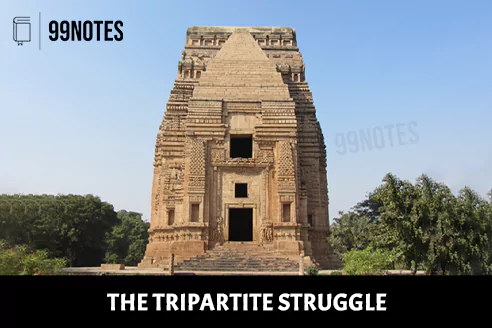
The Tripartite struggle
After the decline of Harsha’s empire in the 7th century, several large states arose in North India, the Deccan, and South India. The Palas, the Pratiharas, and the Rashtrakutas were prominent among them.
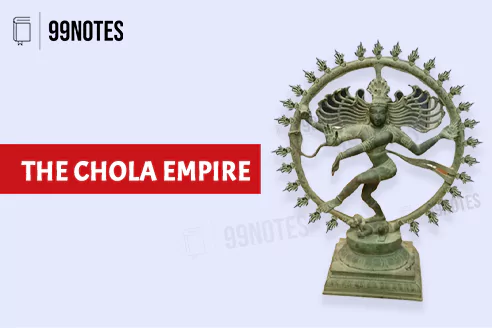
The Chola Empire (850-1200AD)
The Chola Dynasty is one of the longest-ruling families in the history of the world. It rose in the Sangam Age as one of the three kingdoms alongside Cheras and Pandyas. However, very little is known about the Cholas after the end of the Sangam age till the mid-9th century.
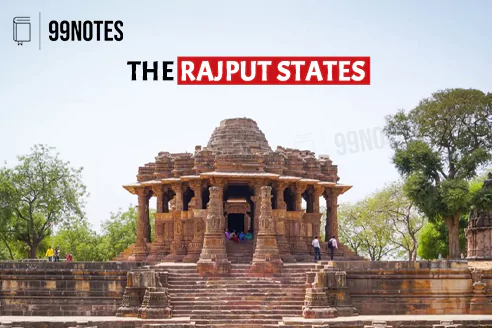
The Rajput States
After the fall of the Gurjar-Pratihara Empire, several Rajput states emerged in north India. The most significant of these were the Paramaras of Malwa, Chandellas in Bundelkhand, Chaulukyas (Solankis) of Gujarat, Chauhans of Ajmer and the Gahadavalas of Kanauj.
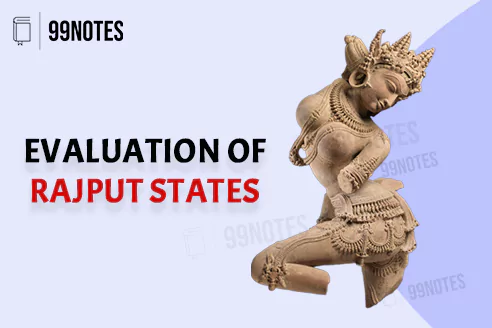
Evaluation of Rajput States
In the previous page, we discussed the chronology of the Rajput states and the early Muslim invasions. In this page, we shall discuss the reasons for the military failure of the Rajputs, their art and society.
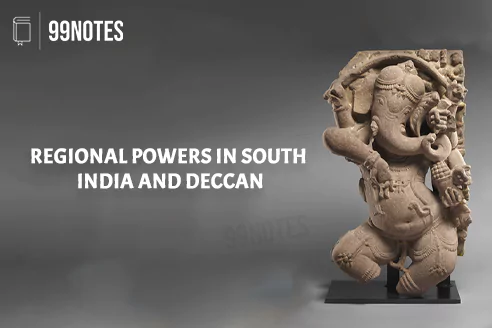
Regional Powers in South India and Deccan
After the Fall of Rashtrakutas, Deccan India came under the rule of Western Chalukyas and the Cholas. These powers had to contend with the Parmaras of Dhara and the Kalachuris of Tripuri. The Cholas and Western Chalukyas struggled against each other in the 10th-12th century until their powers were in vain.
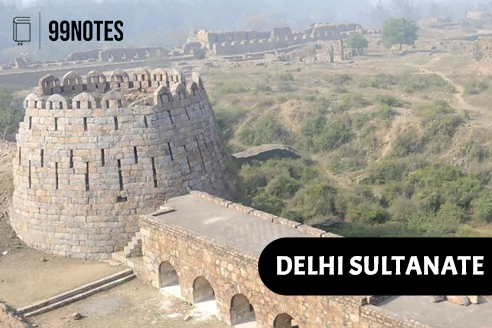
Delhi Sultanate
Muizzuddin Muhammad, also known as Muhammad of Ghor, defeated the Chahmana ruler Prithviraj Chauhan in the Second battle of Tarain in 1192 CE. This defeat paved the way for further Ghurid expansion into India. The Rajputs failed miserably in forging any alliance to recover the lost territories.
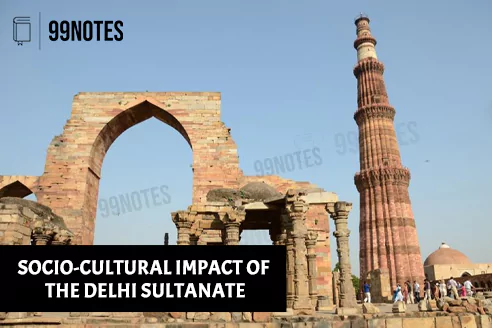
Socio-cultural Impact of the Delhi Sultanate
North part of the empire produced Wheat, Oilseed etc. East and south had rice and sugarcane. Two crops per year could be produced as the soil was fertile. Rice was grown three times a year. Other crops grown were Sesame, Indigo and Cotton.
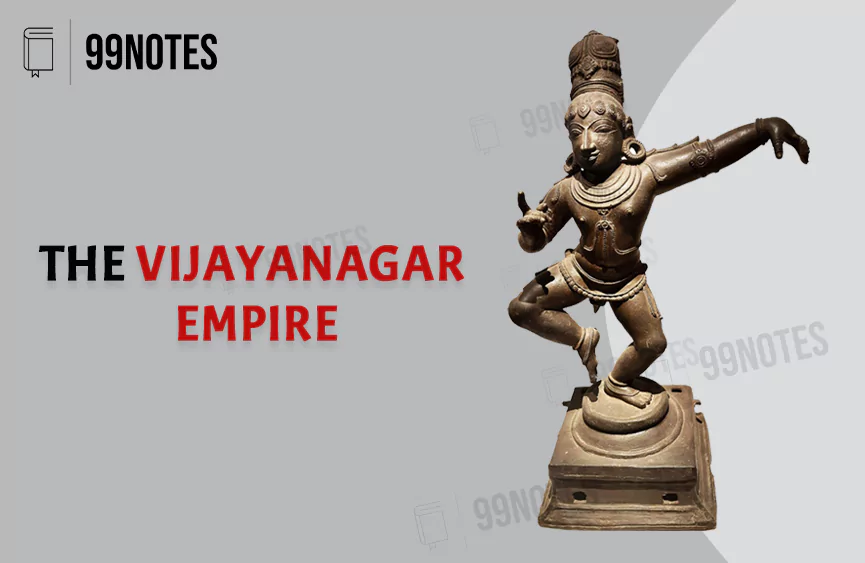
The Vijayanagar Empire
After the weakening of control of the Delhi Sultanate in Southern India, the Vijayanagara Empire and the Bahmani Sultanate emerged as the dominant power in the mid-14th century. By the start of the 16th century, Vijaynagar rulers comprehensively defeated the Bahmanis, too, becoming the most dominant force in the region.
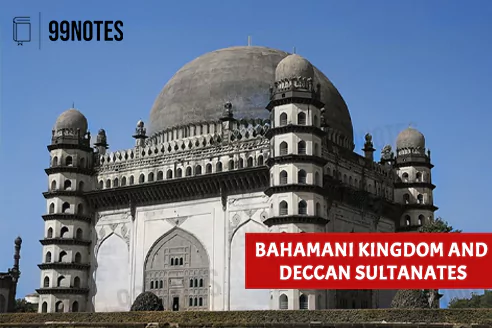
Bahamani Kingdom and Deccan Sultanates (15th – 17th century)
After the fall of Yadavas and Kakatiyas to the Khaljis and Tughlaqs, several Muslim governorships were established in the region. Mohamed Bin Tughalaq had made an elaborate administrative system for the Deccan region and, in the process, appointed Sada Amir/Amiran-i-sada, i.e. the chief of hundred villages. They performed both military and revenue functions.
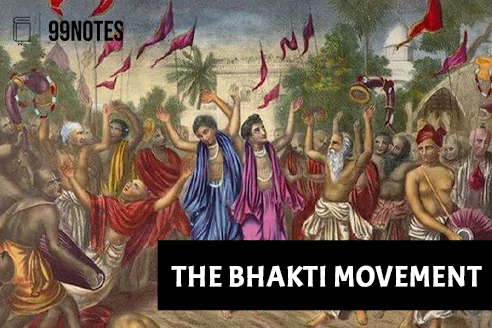
The Bhakti movement
The Bhakti movement was a medieval religious reform movement that preached direct devotion to God without the mediation of a priest. It aimed to reform society by removing the boundaries of caste, creed and sex between the devotee(bhakta) and God (bhagwan). Bhakti is rooted in the Sanskrit word “Bhaj”, meaning to serve. ‘

Bhakti movement in North India
The period from 1375 to 1700 is Bhakti Kal in North India. During this time, many bhakti saints of different beliefs emerged from various parts of India. Some, like Kabir and Baba Guru Nanak, rejected all orthodox religions. Others, such as Tulsidas and Surdas, accepted the existing beliefs but wanted to make them accessible to all.

The Advent of the Portuguese
The Portuguese were the first Europeans to discover a direct maritime route to India and thereby solve the age-old problem of circumventing the Arab Traders. On May 20, 1498, Portuguese merchant Vasco da Gama became the first merchant to arrive in Calicut, an important seaport in South India.
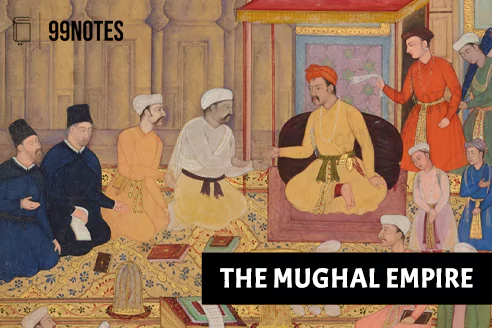
The Mughal Empire
Babur, a Central Asian ruler descendant of the Turco-Mongol conqueror Timor, founded the Mughal Empire. He laid the foundation of the mighty Mughal Empire, which was consolidated by Akbar, and lasted for about two centuries.
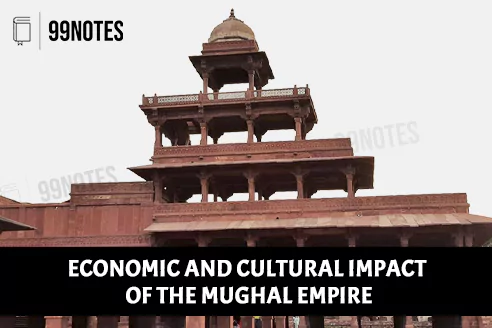
Economic and Cultural Impact of the Mughal Empire
The Indian economy was strong till the Mughal times. By 1700, India’s share of world GDP was 24%, the largest in the world, larger than any other region. India, then, was producing about 25% of the world’s industrial output up until the 18th century.
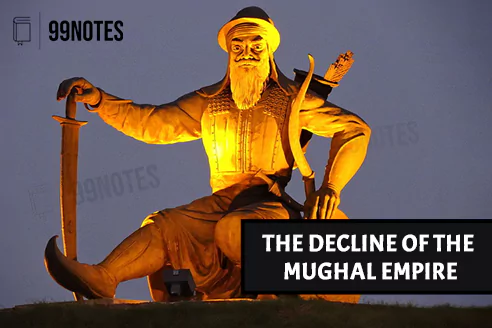
The decline of the Mughal Empire
After the demise of Aurangzeb in 1707, we see a drastic decline in the power and prestige of the Mughal Empire. The political boundaries of the Empire shrank, and the administrative structure built by rulers like Akbar and Shah Jahan also collapsed.
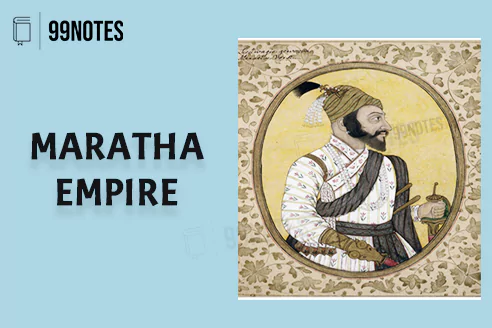
Maratha Empire
The Maratha’s rise in the Deccan began in the early 17th century under the leadership of Shivaji. He carved his territories out of Bijapur, Ahmednagar and Golkonda states. Shahji, Shivaji’s father, joined the services of Bijapur as a Zamindar in 1636 and obtained Poona as a grant.
- History of Medieval India UPSC Notes Free Download
- The Tripartite struggle
- The Chola Empire (850-1200AD)
- The Rajput States
- Evaluation of Rajput States
- Regional Powers in South India and Deccan
- Delhi Sultanate
- Socio-cultural Impact of the Delhi Sultanate
- The Vijayanagar Empire
- Bahamani Kingdom and Deccan Sultanates (15th – 17th century)
- The Bhakti movement
- Bhakti movement in North India
- The Advent of the Portuguese
- The Mughal Empire
- Economic and Cultural Impact of the Mughal Empire
- The decline of the Mughal Empire
- Maratha Empire
In the UPSC Civil Services Exam, medieval India is typically covered in the Indian History section of the General Studies paper. This section tests candidates’ knowledge of the political, social, economic, and cultural developments in India from ancient to modern times.
History of Medieval India
Topics that candidates should be familiar with when studying History of medieval India for the UPSC Civil Services Exam include:
- The rise and fall of the Delhi Sultanate and the Mughal Empire
- The expansion of Islam in India and its impact on Indian society and culture
- The Bhakti movement and the influence of Sufism
- The development of art, architecture, and literature during the medieval period
- The social and economic changes that occurred during this time, including the growth of towns and trade and the emergence of the caste system
- The interactions between India and the rest of the world during the medieval period, including the arrival of the Portuguese and the impact of European colonialism.
It is important for candidates to have a broad and deep understanding of these and other topics in order to do well on the exam.
The study of medieval India is important for several reasons. Here are a few:
- Understanding the history of India: Medieval India was an important period in the history of the country, as it saw the rise and fall of several empires, the spread of religions, and the development of art, architecture, and literature. By studying this period, you can gain a better understanding of the events and developments that have shaped India’s past.
- Understanding the present: The legacy of medieval India can still be seen in contemporary India in various ways. For example, the caste system, which has its roots in the medieval period, continues to be a major social and political issue in India today. By studying medieval India, you can gain insight into the origins of some of the social and political challenges that India faces today.
- Improving analytical skills: The study of medieval India requires students to analyze and interpret a wide range of primary and secondary sources, such as historical texts, inscriptions, and archaeology. This can help you develop critical thinking and analytical skills that are useful in a variety of fields.
Medieval History Notes
The introduction of paper changed the polity of the world significantly. Now, the administrative, Judicial, religious, and literary records could be easily made and transferred, making it easier for the states to maintain control. In India, medieval times, also referred to as the Middle Ages, are marked by the origin of Rajputs in India.
In this topic, we will deeply learn about different dynasties of medieval India, starting from the Tripartite struggle for Kannauj to the Maratha Empire.
Tripartite Struggle for Kannauj:
After the decline of Harsha’s Empire in the 7th century, several large states arose in North India, the Deccan, and South India. The Palas, the Pratiharas, and the Rashtrakutas were prominent among them.
The Tripartite Struggle, aka The Kannauj Triangle Wars, is the struggle for the control of northern India that took place in the 8th and 9th Centuries among the Pratihara, the Pala and the Rashtrakuta Empire.
The Chola Dynasty:
The Chola Dynasty is one of the longest-ruling families in the history of the world. It rose in the Sangam Age as one of the three kingdoms alongside Cheras and Pandyas. However, very little is known about the Cholas after the end of the Sangam age till the mid-9th century.
The Rajput States
After the fall of the Gurjar-Pratihara Empire, several Rajput states emerged in north India. The most significant of these were the Paramaras of Malwa, Chandellas in Bundelkhand, Chaulukyas (Solankis) of Gujarat, Chauhans of Ajmer and the Gahadavalas of Kanauj.
There were other, smaller dynasties spread throughout the country, such as the Kalachuris of Tripuri (near what is now Jabalpur), the Loharas of Kashmir, the Tomars of Delhi, and the Kachchhapaghats of Gwalior.
Regional Powers in South India and Deccan
After the Fall of Rashtrakutas, Deccan India came under the rule of Western Chalukyas and the Cholas. These powers had to contend with the Parmaras of Dhara and the Kalachuris of Tripuri.
The Cholas and Western Chalukyas struggled against each other in the 10th-12th century until their powers were in vain.
The disintegration of the Chola and the Western Chalukyan empires marks the beginning of the 13th century in the history of South India.
Delhi Sultanate
Muizzuddin Muhammad, also known as Muhammad of Ghor, defeated the Chahmana ruler Prithviraj Chauhan in the Second Battle of Tarain in 1192 CE. This defeat paved the way for further Ghurid expansion into India. The Rajputs failed miserably in forging any alliance to recover the lost territories.
In 1206, Qutubuddin Aibak established the Delhi Sultanate after declaring his independence from the Ghurids. The establishment of the Delhi Sultanate resulted in profound changes in India’s society, administration, and cultural life.
The Vijaynagar empire
The Vijaynagar Empire flourished in southern India, comprising the modern states of Goa, Karnataka, Andhra Pradesh, Tamil Nadu, Kerala and some parts of Telangana and Maharashtra.
After the weakening of control of the Delhi Sultanate in Southern India, the Vijayanagara Empire and the Bahmani Sultanate emerged as the dominant power in the mid-14th century. By the start of the 16th century, the Vijaynagar rulers comprehensively defeated the Bahmanis, becoming the most dominant force in the region. Let’s study the origin and the salient features of this rich and diverse kingdom in detail.
Bahamani Kingdom and Deccan Sultanates (15th – 17th century)
After the fall of Yadavas and Kakatiyas to the Khaljis and Tughlaqs, several Muslim governorships were established in the region.
Mohamed Bin Tughalaq had made an elaborate administrative system for the Deccan region and, in the process, appointed Sada Amir/Amiran-i-sada. the chief of a hundred villages. They performed both military and revenue functions.
However, during the later part of his reign, a series of revolts broke out in the Deccan region, after which he started the policy of their suppression. This led to an even fierce revolt by the Amirs.
This led to the establishment of the Bahamani sultanate by Ala-ud-Din Bahman Shah (Jafar Khan) in 1347.
Introduction of Bhakti Movement:
The Bhakti Movement was a medieval religious reform movement that preached direct devotion to God without the mediation of a priest. It aimed to reform society by removing the boundaries of caste, creed and sex between the devotee(bhakta) and God (bhagwan).
Bhakti is rooted in the Sanskrit word “Bhaj“, meaning to serve. ‘Bhakti’ literally means fondness for, homage, faith or love, devotion, worship, and piety. The central theme of the Bhakti movement is that when devoted to God, a person must forget all distinctions and boundaries.
Bhakti Movement in North India:
The period from 1375 to 1700 is Bhakti Kal in North India. During this time, many bhakti saints of different beliefs emerged from various parts of India. Some, like Kabir and Baba Guru Nanak, rejected all orthodox religions. Others, such as Tulsidas and Surdas, accepted the existing beliefs but wanted to make them accessible to all.
Advent of Portuguese
The Portuguese were the first Europeans to discover a direct maritime route to India and thereby solve the age-old problem of circumventing the Arab Traders. On May 20, 1498, Portuguese merchant Vasco da Gama became the first merchant to arrive in Calicut, an important seaport in South India.
Mughal Empire
Babur, a Central Asian ruler descendant of the Turco-Mongol conqueror Timor, founded the Mughal Empire. He laid the foundation of the mighty Mughal Empire, which was consolidated by Akbar and lasted for about two centuries.
The Mughal Empire reached its zenith during Aurangzeb’s rule, after which its decline started, catalysed by its conflict with the Marathas.
The decline of the Mughal Empire:
Let’s understand the decline of the Mughal Empire. After the demise of Aurangzeb in 1707, we see a drastic decline in the power and prestige of the Mughal Empire. The political boundaries of the Empire shrank, and the administrative structure built by rulers like Akbar and Shah Jahan also collapsed. After the collapse of the Mughal power, several independent principalities evolved in all parts of the Mughal Empire.
Maratha Empire
The Maratha empire rise began in the early 17th century under the leadership of Shivaji. He carved his territories out of Bijapur, Ahmednagar and Golkonda. The Marathas remained the dominant force in the Indian political scene till the British grabbed hold of their power.

